https://www.sobelow.org/ – having a peek at this is a most excellent use of five minutes
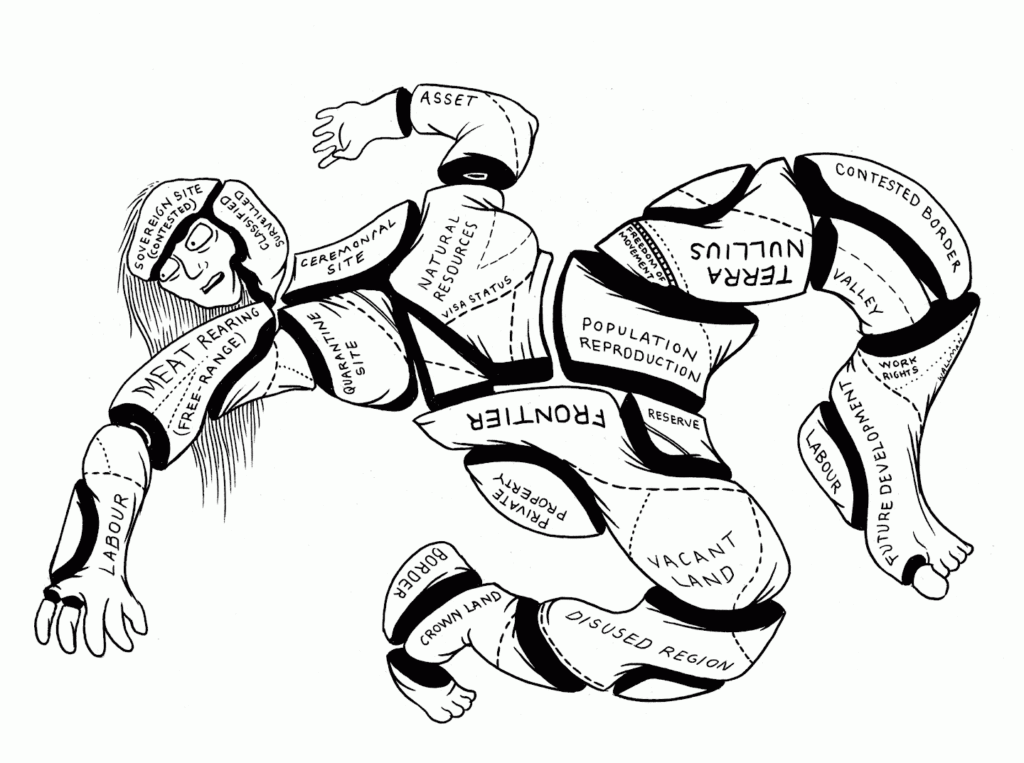
https://www.sobelow.org/ – having a peek at this is a most excellent use of five minutes

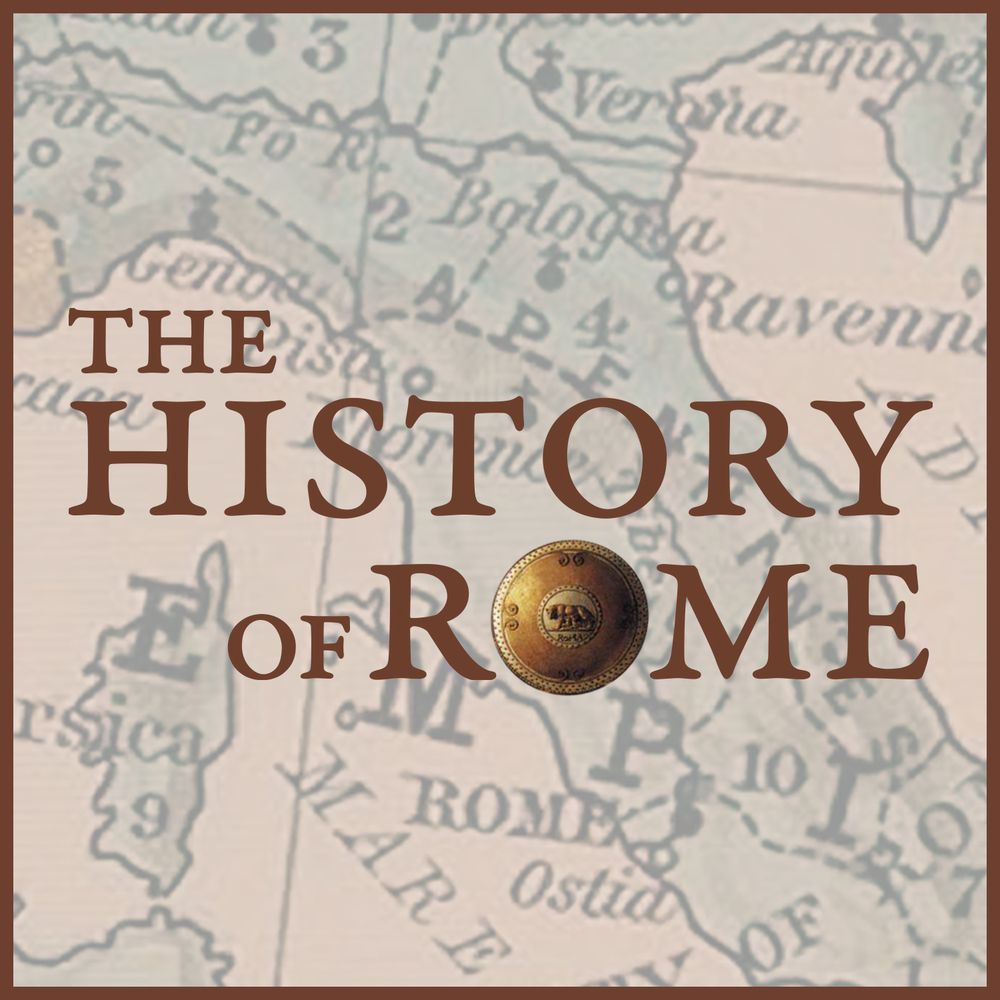
Mike Duncan’s two podcasts, The History of Rome and Revolutions have been a huge influence on the show.
I was relistening to the The History of Rome again recently, and I wanted to flag up this one about Tiberius Gracchus the first Roman leader to seriously attempt land reform:
The audio quality isn’t great but it is short and really on point. Unsettling how many similarities there are with our present day, historic themes do seem to play out on repeat. In fact this episode is also not too different to some of the land reform themes that are on display when Mike covers the Mexican Revolution too. If you also listen to the previous episode 28, that might help with additional context.
https://thehistoryofrome.typepad.com/the_history_of_rome/2008/11/29–tiberius-gr.html
Money earned through enslavement played a key role in the eviction of Highlanders in the 18th and 19th centuries, study finds
Between roughly 1750 and 1860, wealthy landowners forcibly evicted thousands of Scottish Highlanders in order to create large-scale sheep farms. Known today as the Highland Clearances, this era of drastic depopulation sparked the collapse of the traditional clan system and the mass migration of Scotland’s northernmost residents to other parts of the world.
As Alison Campsie reports for the Scotsman, new research argues that this pivotal period in Scottish history had close ties to the enslavement of people in British colonies, with a cadre of individuals enriched by slavery evicting at least 5,000 people from their property and buying up more than one million acres of land relinquished during the clearances.
Read full article via https://www.smithsonianmag.com/smart-news/new-research-investigates-how-enslavement-profits-changed-landscape-scottish-highlands-180976311/
Some useful words about large land owners vs community land ownership by Prof Jim Hunter from his talk ‘What can Scotland learn from community land ownership?’ at the Community Land Conference, Stirling, May 2018
from http://www.communitylandscotland.org.uk/wp-content/uploads/2018/05/Jim-Hunter-speech.pdf
When, three years ago, I was asked to join the board of Community Land Scotland, I wasn’t all that keen. I’ve been around the land reform issue for too long, I said to Lorne MacLeod, our then chair. And I’m supposed to be retired.
Well, that’s just it, said Lorne. We need to keep a lid on our expenses. And because you’ve got a bus pass, you won’t cost us very much. And anyway, said Lorne, all our meetings are in Inverness. Less than half an hour from where you live. The thing’s not going to take up any time at all. Aye, right.
The last three meetings of our board have been in … Galashiels … Paisley … Dumfries. My bus pass, and my senior rail card, have never been in such demand. Which is, mind you, a good sign. An indication that community land ownership, which got going in the north, and for a while seemed limited to that area, is beginning now to take off in the southern half of Scotland. That’s very, very welcome.
But to the title I’ve been given … What can Scotland learn from community land ownership? Well, it’s not for me, as I bow out and get a wee bit valedictory, to be definitive on that. But I’ll offer one or two thoughts. Which, by the way, are my thoughts, not those necessarily of CLS.
As I said, I’ve been a backer of the cause of land reform for a long, long time. My first pronouncements on the topic, I reckon, date from more than half a century ago. When I was still in school in North Argyll. The occasion … one September when the Oban Times devoted columns to the guest list for the Argyllshire Gathering Ball … a highlight of the landed gentry’s social scene.
Perhaps, I said, we common folk should cut out and retain that guest list page … on the basis that, when revolution came, it might be handy. Well, for better or for worse, there was no revolution. But I’ve maintained a lifelong interest in the way our land is owned … and in the inequalities that stem from that.
First, writing a PhD thesis, then a book … it’s still in print … about the crofting battle for security of tenure … a battle that, when crofters won, brought clearance to an end.
Then being encouraged, during the 1970s and 80s, by signs that land reform, after a lengthy absence, might yet get back on to political agendas.
Signs like John McEwen’s work on who owns Scotland. Or the appearance of the West Highland Free Press, with a mission to right wrongs that flow from limiting land ownership to very, very few. Or the emergence of the Scottish Crofters Union for which I went to Skye to work.
Another indication of the way the tide was running in those years was the reception accorded to that great piece of theatre, The Cheviot, the Stag and the Black, Black Oil.3
At its close its cast declaim repeatedly, ‘The people do not own the land. The people do not control the land.’
The implication … one applauded up and down our country … was very much that this had got to alter. And by the 1980s, it was possible to think that it just might … with talk of new departures in community land ownership. But this was theoretical.
Until, in 1992, crofters in Assynt did what no occupants of land in Scotland had ever done before. Bid, in the open market, for ownership of the estate on which they lived.
‘Well, ladies and gentlemen,’ said the late Allan MacRae at a public meeting held the night the crofting bid succeeded … ‘Well, ladies and gentlemen, it seems we have won the land … And in winning the land,’ Allan went on, ‘Assynt crofters have struck a historic blow.’
And so they had. From that victory there followed a whole series of community land buy-outs. Eigg, Knoydart, Gigha, North Harris, South Uist, Galson … and so on. In total some hundreds of thousands of acres. But then … and disappointingly … this progress seemed to stall. Which is why, I think, a set of people from estates and islands in community control got together, in September 2009, in Harris.
As opening speaker at that gathering, I began with what had been accomplished.
I next said this: ‘What I want to focus on is the public policy environment in which community ownership has taken off and prospered.’ ‘For while community ownership,’ I said, ‘could not have succeeded in the absence of the efforts made by people on the ground, neither could it have succeeded without support from government and its agencies.’ ‘It’s my belief,’ I said, ‘that, since the present Scottish government took office, this support, which grew steadily under previous administrations, has lessened very markedly.’
The government I spoke of was the SNP administration that took office two years earlier. And since, let me be clear, I am myself a member of the SNP, I wasn’t motivated by hostility to that party. I was, I think, expressing what was then a common feeling in community land circles. A feeling that, while in the early years of Scotland’s restored parliament, land reform, community land ownership, had been way up there in bright lights … those things, politically at any rate, had ceased to matter. No further legislation was being mooted. The Scottish Land Fund, set up in 2001, had gone into abeyance. At Holyrood, it seemed, there was a lack of interest.
Well, that was then. Today things look quite different. We’ve had a Community Empowerment Act. A Land Reform Act. A Land Commission’s been established and is now hard at work. The Scottish Land Fund’s been restored. New community land purchases are being pushed in Wanlockhead, in Ulva and elsewhere. Our show is back on the road. Why this transformation?
There’s no single explanation. But one thing, I believe, is key. A decision taken at that 2009 Harris conference. The decision to set up what’s now Community Land Scotland … this organisation.
Back to our headline question … What can Scotland learn from community land ownership? Well, one thing to be learned is this. That change … radical change … change for the better … can be made to happen. Too often in Scotland, when confronted with injustice, inequality … with poverty, with deprivation, disadvantage …. We’ve taken refuge in that dreary piece of wisdom, It’s aye bin. Well, if it’s aye bin, then that’s because we’ve let it be.
And as regards our obsolescent, grossly over-concentrated, pattern of landownership … as regards that … more and more of us are of a mind that it’s aye bin has had its day.
Change, to repeat, is feasible. But no way does it happen by itself. Votes for women, as we’ve been recalling in this centenary year of female suffrage, didn’t just fall from the sky. They were fought for. Security of tenure for crofters wasn’t a kind gesture made by landlords. It took the Highland Land League, and lots of direct action, to obtain it.
And so it’s still with land reform … With ensuring a supportive climate for existing and prospective community land owners … It takes lobbying … Engagement with parliamentary committees … With the Scottish government … With civil servants … With the Land Commission … With other public bodies … And with the private sector. It takes, in short, the work done by Community Land Scotland.
My role in Community Land Scotland, a role that ends today, hasn’t, to be honest, been of very great significance. Though, as Lorne forecast, my bus pass has proved helpful.
But my time on our board has given me an opportunity to get a glimpse of what Community Land Scotland’s all about. Not just putting on this annual conference … though that’s vital. But the day-to-day stuff that goes on and on year round. The work of our headquarters staff … our policy directors … the effort put in, voluntarily, by our chairs.
This, I believe, has helped sort out a lot of what concerned those of us who met in Harris nine years back. Community Land Scotland’s had a hand in re-establishing the Land Fund. In pushing for new rounds of legislation. In influencing that legislation’s shape. And all this on a shoe string.
I said in Harris that, in my opinion, the long-run funding for a powerful voice for the community land sector could only come … should only come … from inside the sector itself. That’s still my view. Though it’s one, I know, not everybody shares. I also know … at least I think I know … why this is so.
No community land trust is rolling in spare cash. And trusts are focused … rightly focused … on their own localities where, all the time, there’s much, and often too much, to be done. But the wider scene … the one where CLS has made, and makes, a difference … is one that matters locally as well. To take just one example.
CLS devotes much effort and resource to backing groups that are still trying to buy land.
This might appear of no great relevance to trusts that are already up and running.
But that’s wrong. Growing the community land area boosts community land owners as a whole. By adding to the sector’s overall significance … by giving it a greater clout … with politicians and with others. Hence my stress on the lesson that what’s basic in the business of getting change to happen is a need at all times to be organised … especially at a national level. That’s what’s shown by the record of Community Land Scotland.
And what else might be learned from the community land ownership experience?
Well, it shows, I think, that there’s great merit in putting trust in people. Ours is a terribly centralised country. Scotland has 32 councils. Norway, with a similar population, has 400 communes. France has 36,000. Nothing anywhere is perfect.
But it’s hard not to suspect that here in Scotland, if we were to extend continental-style devolution to people living in small towns, in villages, in rural areas, we’d give to these same people an opportunity to do all sorts of good things for themselves. That’s certainly suggested by community land ownership. In advance of a community land purchase, folk wonder, naturally enough, if they can or will do better than what was there before. Invariably they do.
The story of community land ownership’s a story of magnificent achievement. The members, the supporters, of our land trusts have changed fundamentally a pattern of land ownership that once seemed fixed for all time coming. In the process, trusts have fostered and unleashed all manner of entrepreneurial and other energies. They’ve shown that depopulation can be reversed, businesses created and homes built in places where these things were long believed to be impossible.
They’ve demonstrated that wind power and other resources can be harnessed for local purposes. They’ve proved that previously loss-making estates can be run at a profit. They’ve done much else besides. Which is not to say community land owners are infallible. They most certainly are not. They’ve made mistakes … and, for sure, they will make more. Sooner or later, one, or more than one, of them will get into real difficulty.
At which point opponents of reform will say this shows community land ownership does not, and cannot, work. But that won’t in any way be true. A busted land trust won’t invalidate the concept of community land ownership. Just as one company going bankrupt does not imply that companies more generally are headed for the knacker’s yard. What matters is what’s being accomplished by community land trusts in their totality. And that is a great deal. Which is why we need more, much more, community empowerment.
Give people power, control, responsibility … at a truly local level … and they’ll rise to the challenge. Gaining, as they do so, in self-confidence and self-esteem. That’s shown by what’s resulted from community land ownership. And so to one last lesson … Which is that, though the story so far’s pretty good, there’s still a great deal to be done.
This summer in Assynt crofters celebrate the 25th anniversary of the formal transfer to them of the North Lochinver Estate. In that quarter century community land ownership’s come to being seen as something we need more of. Recognised … indeed facilitated and promoted … by various Acts of Scotland’s Parliament … backed financially by a Land Fund … aided by the work of agencies like HIE and now the Land Commission.
And yet … as between a prospective community purchaser of land on one side … a prospective private buyer on the other … there’s nothing like a level playing field.
Communities are required … in a whole variety of energy-sapping, timeconsuming ways … to demonstrate their credentials … to prove they have support … to make public in great detail what it is they plan to do … to show that these plans are affordable.
The private buyer, in contrast, does no more than sign a cheque. But that, it’s argued, is OK … The community, it’s said, get public money… The private buyer doesn’t. Two points.
First, the amount of public money going into community land purchases is routinely … and, I think, deliberately … exaggerated. In a book about community landownership, published in 2012, I worked out … with help from HIE and others … the cost to the public purse … of getting into community control … the then total of near 500,000 acres.
The cash involved … more than half of it from the Lottery … the rest from the taxpayer … was in the order of £30 million. Sure, that’s a lot of money. But it’s maybe put in context by the fact that it’s equivalent to the cost of each 600-yard length of the Edinburgh tramway.
My second point. The notion that, in contrast to community land purchasers, private buyers are no drain on taxpayers is … to put the matter kindly … a little bit in error. Agricultural subsidies, forestry grants, tax concessions … Landlords get all of these. To further minimise taxation that might otherwise be due, they’re free to construct allegedly charitable trusts, vest ownership of land in overseas tax havens … Etcetera.
So let’s have no pretence that community land ownership soaks up public money while private landlords come at zero cost to taxpayers.
Which is not to say that getting land into community control should be made easier.
I’m by no means certain that it should. Big responsibilities come with community land ownership. It’s therefore right that folk going into it should have their motives, aims, objectives made liable to stringent public scrutiny. But so, I think, should private buyers.
This then’s another lesson to be learned from community land ownership. The upfront tests applied to a community aspiring to buy land have more than proved their worth.
Time now to think about equivalent tests for large-scale private purchasers.
Tim Ralphs has been learning Mandarin, and writes:
The Mandarin character for “Equal”, as in “Equality”, is made up of the character for “soil” and the character for “uniform”, as in “the same”, not what school students have to wear.
So the idea of equality is rooted in a sense of having uniform access to fertile land, it’s in the written word itself.

 You can’t really understand English history without a thorough grounding in the English Revolution in the mid 1600s. That this is called the English Civil War in England, and the English Revolution elsewhere, is indicative of numerous attempts to rewrite this period of history to suit the winners and the powers that be.
You can’t really understand English history without a thorough grounding in the English Revolution in the mid 1600s. That this is called the English Civil War in England, and the English Revolution elsewhere, is indicative of numerous attempts to rewrite this period of history to suit the winners and the powers that be.
Christopher Hill is a masterful guide to this period in history and this is a really good place to start understanding the revolution from a far broader perspective than ones you may have picked up from popular culture or school.
Featuring the Diggers, the Ranters, the Levellers, the Quakers and any number of other sects and radicals who survived to become religions or nineties festival bands, it is a portrait not of the bourgeois revolution that won out but of the far more fundamental overturning of society which many were driving for.
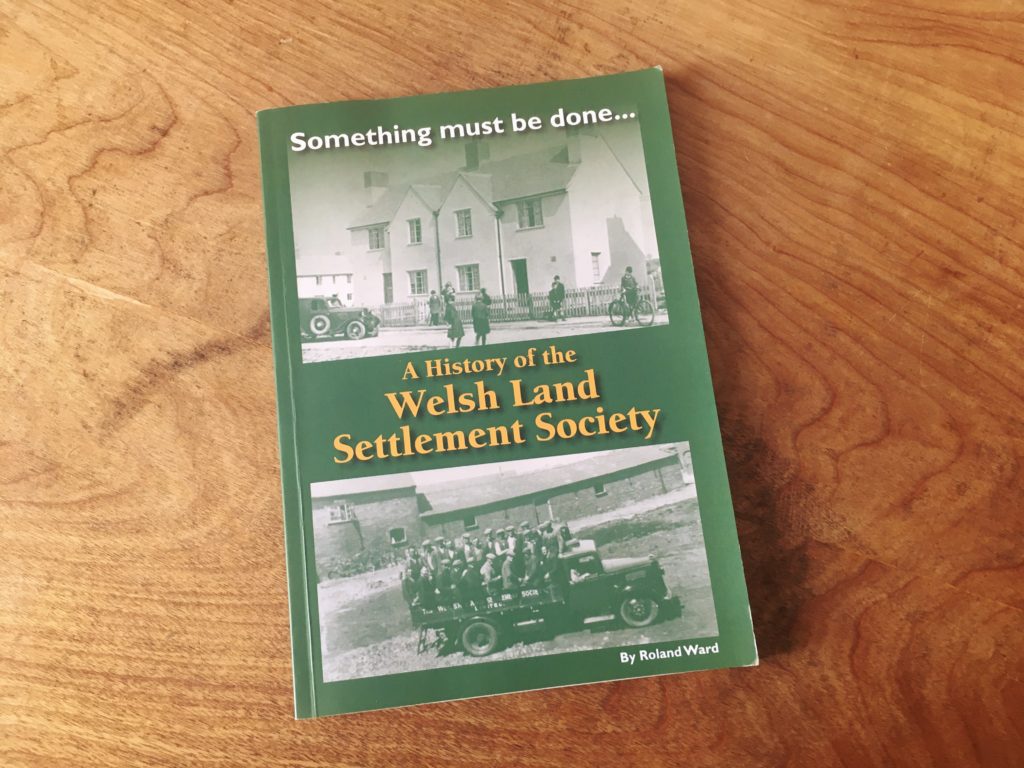
The land settlement societies and land settlement association, are along with the Plotlands movement, important forgotten parts of recent British history. They stand as highly useful and inspiring examples of post war movements of people back to the land and the countryside. The Plotlands were bottom up and anarcist in nature (although I highly doubt the participants would have identified as anarcist!), whilst the land settlement movement was far more top down with state and non state actors involved.
This book is short, sweet and very detailed about facts, figures and costs whilst making keen observations about the surrounding politics. The sub title ‘something must be done’ is a quote from Edward Windsor when he was part of the British royal family which in part antagonised the government to take action on the huge number of unemployed people in Wales by supporting them into running smallholding businesses. Edwards words were seen as inflamatory, and inappropriate meddling by the supposedly a-political monarchy at the time.
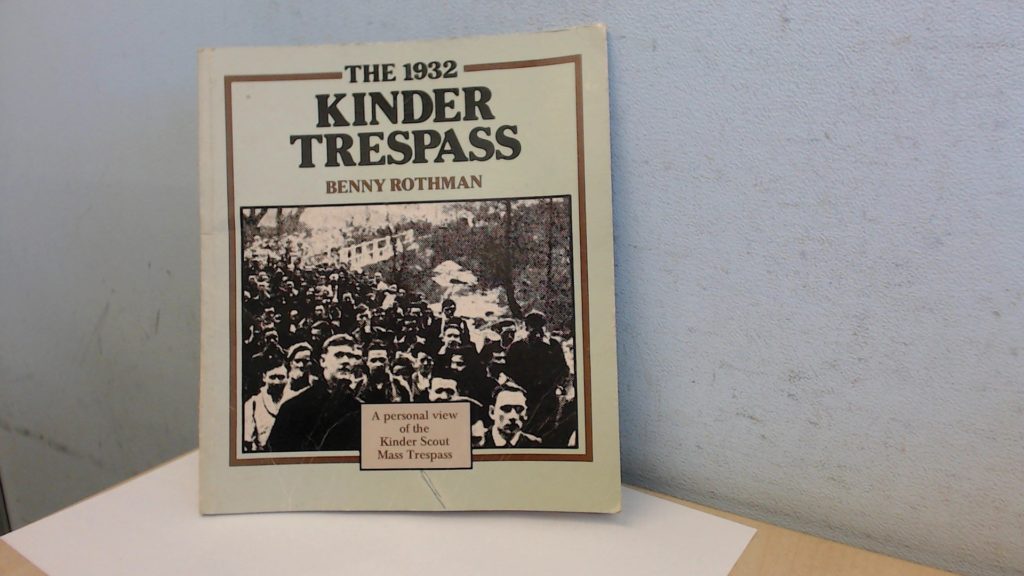
A book about the Kinder Scout trespass by a main organiser in his own words. Lots of stuff in here which I’d never learnt anywhere else, it’s hard to track down this out of print book but well worth the effort.
This is a really great deep dive into local Sheffield history whilst at the same time providing lots of context which I imagine would make it still of interest to those further afield.
I drank it down and revelled in the geekery, for example, did you know that Mount Pleasant is the name for the part of each town or city where all the night soil (aka human poo) was taken every morning so farmers could transport it to their land for fertiliser?
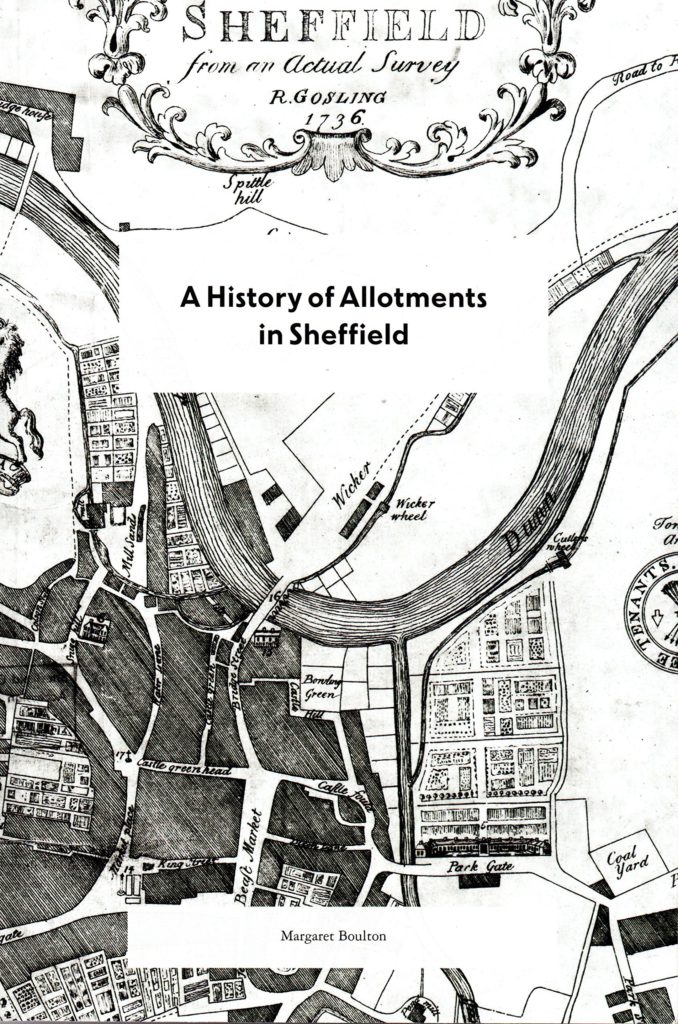
Race and class in the ruins of empire

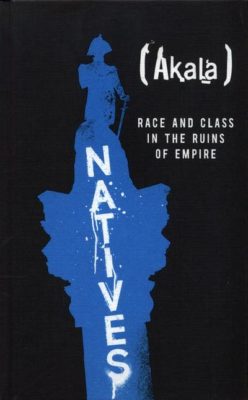 We are major Akala fans here in the herd and regularly send his various short youtube videos over to folks for homework.
We are major Akala fans here in the herd and regularly send his various short youtube videos over to folks for homework.
I’m not going to write about this book here because The Guardian’s book review does all really good job of inspiring you to read it.
After you’ve read this, The Many Headed Hydra is a great companion book to dive deeper.
An account of farming in the Chelmsford area of Essex
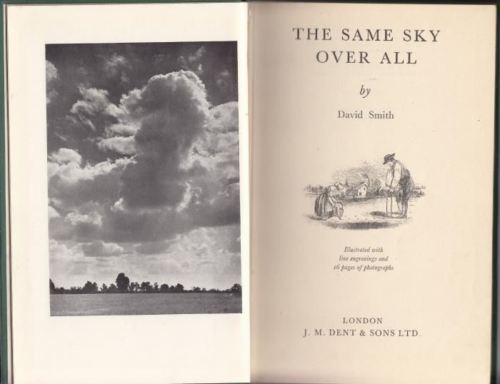
Another book in the same genre as ‘Where Beards Wag All‘ which perfectly and poetically captures the last days of pre mechanised peasant agriculture in Essex and the first steps of the transition into fossil fuel fuelled farming. Simply and beautifully written, a good way to look back to look forward

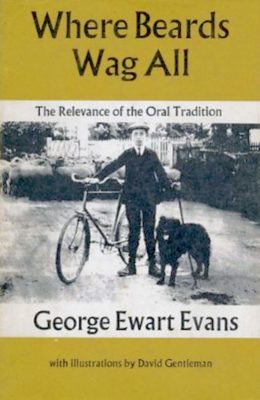 A really beautiful insight into the last days of peasant agriculture in England before the post war mechanisation of agriculture and the role of the oral tradition in rural communities.
A really beautiful insight into the last days of peasant agriculture in England before the post war mechanisation of agriculture and the role of the oral tradition in rural communities.
From his landmark study of rural life in East Anglia, Ask the Fellows Who Cut the Hay (1956), George Ewart Evans set about, in a series of books, unveiling the sylvan round of myth and merriment, plenty and hardship, that informed the traditions and texture of country living. Core to his chronicles is the oral tradition, echoing through the years, and it is this that he concentrates upon in Where Beards Wag All (1970). Here are the memories, unmediated and raw, of the craftsman, the drover, the marshman – a chorus to the seasons’ constant turn. And it is by no means an idyll they describe: thrift and want, poverty and subjection are often their lyric. The depression of the 1930s is vividly brought to life, and a particularly affecting section details the migration of East Anglian farm-workers to the maltings of Burton-on-Trent. Where Beards Wag All is a touching and faithful portrait of the countryside of fading memory.

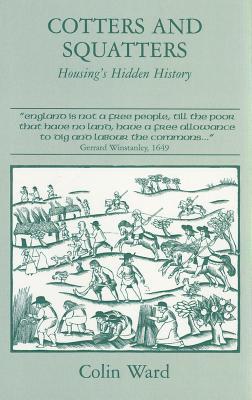 This book is magnificent and tragically out of press with second hand copies going for silly money. I’ve tried to persuade the publisher to re-issue it or to make it available digitally but to no avail yet. Succint, throughly readable and utterly compelling, I hope your local library can sort you out with a copy.
This book is magnificent and tragically out of press with second hand copies going for silly money. I’ve tried to persuade the publisher to re-issue it or to make it available digitally but to no avail yet. Succint, throughly readable and utterly compelling, I hope your local library can sort you out with a copy.
Squatters were the original householders, and this book explores the story of squatter settlements in England and Wales, from our cave-dwelling ancestors to the squeezing out of cottagers in the enclosure of the commons.
There is a widespread folk belief that if a house could be erected between sundown and sunset the occupants had the right to tenure and could not be evicted. Often enquiry into the manorial court rolls shows this to be the case. Unofficial roadside settlements or encroachments onto the ‘wastes’ between parishes provided space for the new miners, furnacemen and artisans who made the industrial revolution, while cultivating a patch of ground and keeping a pig and some chickens. Colin Ward’s book, full of local anecdote and glimpses of surviving evidence, links the hidden history of unofficial settlements with the issues raised by 20th century squatters and the 21st century claims that ‘The Land is Ours’.
Colin presents a wealth of fascinating anecdote, analysis and polemic highlighting the sheer variety of ways individuals have created sustainable homes and livelihoods in nooks and crannies at the margins of society.” Regeneration and Renewal
“Rural squatters are now only a footnote in social history. Their families built themselves a house on some unregarded patch of land… For years, the environmental humanist Colin Ward has tried to rescue such people from the mythology of heritage museums, the indulgences of romantic novelists and the dust of local archives; and to draw lessons from them for today. Cotters and Squatters is the latest vivid instalment of his campaign.” The Independent
“Ward is not averse to a little squalor, or at least untidiness.The modern countryside is altogether too neatly packaged and sewn-up for the benefits of the well-off, he feels. Overzealous planning laws, and what he calls “the suffocating nimbyism of the countryside lobby, with its Range Rover culture,” are dismissed as an affront to rural history. His new book is an exploration of the long struggle of the rural poor to acquire and keep a roof over their heads.” The Guardian
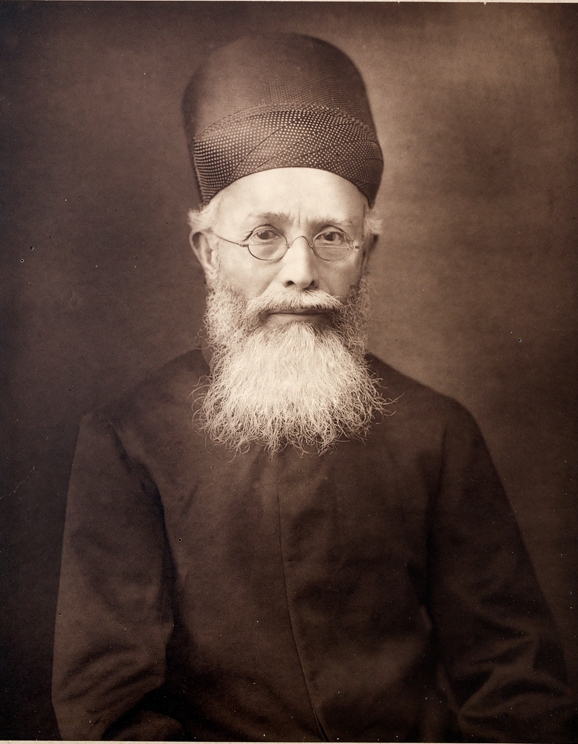
Dadabhai Naoroji (1825-1917) was the first Asian to sit in the House of Commons, a hugely important leader in India before Mahatma Gandhi, as well as being an anti-racist and anti-imperialist of global significance. Well worth learning more about his inspiring life via:
Well this short history overview (taken from http://cabiners.wum.land/Wum-Land-Development_intro_to_LID.pdf) is really rather good and covers much of the same stations as the show plus a few more that didn’t quite make the cut, due to lack of time rather than historical badassness. There is another excellent piece more specific to the Forest of Dean here https://cabiners.wum.land/history.html
450 to 1066 – Anglo-Saxon Charters grant land to ‘lay people’ (commoners), set-up the administrative areas that correspond closely to our modern parish boundaries. The earliest surviving charter of King Hlothhere of Kent was drawn up in AD 670.
1066-7 Norman invasion displaces Anglo-Saxon commons/ land ownership model. William the Bastard declares that all land, animals and people in the country belong to him personally. This was as alien to the Isle’s customs as the colonial land-grabs were to the First Nations of America. Still today, the monarch’s land monopoly remains, in theory and practise, a legal reality. Land is parcelled up and given as payment to Williams forces. We go from a country in which >90% of people owned land, to a country of landless serfs, themselves owned by foreign lords.
1066-70 The ‘Greenmen’ resist the Norman invasion. Wearing camouflage, they run guerilla warfare campaigns against the invaders who called them the ‘silvatici’ (the men of the woods).
1069–70 the ‘Harrying of the North’, William burnt down every building between York and Durham, and killed by starvation or sword over one hundred thousand people. Many of the largest land owners in this country still today proudly trace their family tree back to ancestors who were involved in this bloodbath.
1135 – 1154 Civil war during the reign of Stephen saw the strength of the regional lords/ barons rise relative to the Crown as they established political and judicial arenas other than those defined by the Crown- creating a degree of regionalisation. England’s population more than doubled during 12th and 13th centuries stressing the economically inefficient land monopolies.
1215 Barons forced King John to limit his own power by signing Magna Carta which restated certain ancient, customary rights. Some of which were pre-Norman, and likely echoed back to our ancient oral traditions, existing long before the Roman invasion.
1217 Charter of the Forest re-established rights for Freemen to access and make use of the Royal Forests without persecution.
1235 – Statute of Merton encouraged landowners to convert arable land into pasture, as demand for British wool increased. Displacing traditional peasant agriculturalists and farmers. Commons Act 1236 allowed lords to enclose common land. Wool was the backbone and driving force of the medieval English economy between the late thirteenth century and late fifteenth century the trade (a primary driver of enclosure) was called “the jewel in the realm” or ‘half the wealth of the kingdom’. Statutes of Westminster 1275/ 85/ 90- restrict subtenure/ sale of parcels of land (a threat to state land monopoly) other than to the direct heirs of the landlord. It was prompted by certain lords who were dissatisfied with increasing amount of subtenures. These restrictions gave rise to ‘livery and maintenance’ or ‘bastard feudalism’, i.e. the retention and control by the nobility of land, money, soldiers and servants via salaries, land sales and rent. In-effect, this was the start of modern wage-slavery, and still works today, to ensure the regions remain economically dependent on the core, via state subsidised and enforced land monopoly to restrict regional economic and thus political power.
Rising European merchant class capitalised on mass production of wool being facilitated by displacing agrarian communities.
British wool became very sought after in Europe. Increasing demand for British wool, led to more mass displacement of peasants–generating an landless ‘class’ of urban dependents.
Great Famine 1315 and the Black Death 1348 killed >1/3 of the population, forcing the landed classes to value the productive members of their society (the peasants) who grew all the food.
1337-1453, Hundred Year War vs France, financed by merchant capital to gain control of the Flemish wool industry and weavers.
1340-1380 purchasing power of rural labourers increased 40%.
1351/ 49 The Labourers Acts were the nobilities reaction to the rising bargaining power of peasants, they fixed wages to ‘preplague levels’, restricted free movement and price-fixed foods.
1377 John of Gaunt imposed a new tax, the Poll (head) Tax.
1381 Peasants Revolt : Kentish rebels joined by many townsfolk, entered London. They destroy gaols, burned down Savoy Palace (Gaunts home), plundered Lambeth Palace, burnt books and buildings in the Temple, killed anyone associated with the royal government. The following day, Richard met the rebels at Mile End and acceded their demands, including the abolition of serfdom & poll tax (the only promise not reneged soon after)
1400-1409 Owain Glynd r last native Prince of Wales (Tywysog Cymru) viewed as a de facto King, led the ‘Welsh Revolt’ rapidly gaining control of large areas of Wales. Eventually his forces were overrun by the English, but despite the large rewards offered, Glynd r was never betrayed. His death was recorded by his kinsman in the year 1415, it is said he joined the ranks of King Arthur, and awaits the call to return and liberate his people.
1450 – Jack Cade led an army of Kentish peasants (described by ‘Shakespeare’ as “the filth and scum of Kent”) the rebels persuaded first army dispatched to pack up & go home, skilfully evaded a second of 15,000 men led by Henry VI, defeated third army in battle, killing two of the king’s generals in the process.
1450–1451 John and William Merfold’s Uprising centred around Sussex, mostly comprised of artisans pillaging and killing local gentry and clergy. “[The rebels wished] as lollards and heretics, to hold everything in common.” – the King’s Indictment, 1451
1489 Depopulation Act ‘agaynst pullying doun of Tounes’, Kings introduce anti-enclosure acts, due to widespread clearances, and the depopulation of entire villages. There were to be 11 similar Acts & eight commissions of enquiry over next 150 years. Henry VIII legislates against early cloth factories & enclosures, a primary source of wealth for the emerging ‘middle class’ of land owners, but lacked the strength to fully implement his changes.
1515 Henry VIII orders all pasture be converted back to arable in an attempt to reign in fortunes being made by the merchants.
1536 to 1541 – Dissolution of the Monasteries by Henry VIII privatising church lands (then 1/5th of the land), generating even more landless people, wholly dependent on urban wage-slavery.
1549 Kett’s anti-enclosure rebels 16,000 strong, took Norwich. Kett was 57 years old and one of the areas wealthier farmers. Erection of Cottages Act 1588 “against erecting and maintaining of Cottages” by people with less than four acres of freehold land. Prevent people building homes, farming remaining common land There is a surprising amount of continuity, in ‘open field systems’ from the fourth millennium BC up until the Norman invasion. Communal land management originated centuries, perhaps millennia before the Anglo-Saxon era. In Anglo-Saxon land law or ‘folkland’, as it was called, land was held in allodial title by the group, individual ownership did occur but it was limited to ensure the needs of the group were met.
1607 the agrarian changes (depopulation, enclosure) in the Midlands had produced mass armed revolts of the peasantry.
1607 to 1636, Government pursued an active anti-enclosure policy. Charles I, the ‘Commoners’ King’ was ‘re-commoning’ lands enclosed by lords and merchants, just before Civil War.
1620 Sir Edward Coke ‘greatest of English judges’, and a keen opponent of enclosure, declared depopulation against the laws of the realm ‘the encloser who kept a shepherd and dog in place of a flourishing village community was hateful to God and man.’ Ethnically cleansing ‘peasants’ is a clear violation of our ancient Common Law of Tort which is ‘cause no injury, harm or loss’
1626–1632 The Western Rising was a series of riots in the Dean and other Forests against disafforestation of royal forests
“In 1633-4 we find a proposal that all inclosures made since James I. should be thrown back into arable on pain of forfeiture” Enclosers still prosecuted in the Star Chamber as late as 1639.
1638 in the Forest of Dean “The deer were to be disposed of, as demoralizing the inhabitants and injuring the young wood; the commissioners recommended ejecting the cottagers who had established themselves in the Forest, as often before, in defiance of authority, and who numbered upwards of 2,000, occupying 589 cottages, besides 1,798 small enclosures containing 1,385 acres. As to defraying the cost of executing the above works, the commissioners recommended the sale of about 440 acres of detached Crown land adjoining the Forest” Charles I gave a short break in enclosures, he’s then beheaded. Post civil war enclosures accelerated by a largely landowning Parliament, blighting our entire population to this present day.
1642-1651 English Civil War, old feudal v.s. merchant powers.
1649 mass-redistribution, Cromwell sells 1,677 Royalist Estates
1649 Gerrard Winstanley with a peasant army, called the ‘True Levellers’ (later diggers) declaim the Earth a Common Treasury. The Diggers print radical protestant literature, aimed at reforming the social order with an agrarian lifestyle based on the creation of small egalitarian, self-sufficient rural communities, an ecological interrelationship between humans and nature, “true freedom lies where a man receives his nourishment and preservation, and that is in the use of the Earth.”
1659, Forest riots ‘probably excited by the efforts which the Government had recently made for the re-afforesting of 18,000 acres; to effect which 400 cabins of poor people, living upon the waste, and destroying the wood and timber, were thrown down.’ English nationalist discourse in the mid-17th century spoke of throwing off the ‘Norman yoke’ – i.e. feudalism, land monopoly.
1671 Game Act made it illegal to hunt wild animals, considered a common right since time immemorial. Also illegal for farmers to protect crops from rabbits, other animals. Starvation or crime. Around now modern banking arrived in England from Holland leading to a century of boom and bust bubbles, expensive wars in which banking families made huge profits funding both sides.
1680 in the FOD “there were remaining about 30 cabins, in several parts of the Forest, inhabited by about 100 poor people, (The Crown) had taken care to demolish the said cabins, and the enclosures about them.” These were not the Forest “free miners”, although “they had been born in it, and never lived elsewhere,” but as “cabiners,” who had to work seven years in the pits before they could become “free.” Freedom=Slavery. Glorious Revolution of 1688 leading to the Bill of Rights 1689.
1700-1850 Parliamentary Enclosures, no longer held back by sections of the Church, nor the power of Monarchs- enclosures increase exponentially in speed and size, urban slums grow too.
By 1700 half all arable lands enclosed, by 1815 nearly all farm land was enclosed, hunting, grazing, gleaning rights all but lost.
From 1750 to 1820 desperate poachers were ‘hanged en-mass’
1790-1830 a third of rural population migrates to urban slums. Where they are put to work in factories, workhouses called by Blake the “Satanic Mills” of modernity, i.e. ‘Industrial Revolution’.
1788 Mr. Miles Hartland, assistant-deputy-surveyor stated to the Dean Forest Commissioners, “cottages and encroachments in the Forest have nearly doubled within the last forty years.”
1811 – 1816 Concerned that machines would replace their highskill labour, the Luddites smash machinery, threaten industrialist. Luddites were not anti technology, they were pro-workers rights. Early 1800’s Industrialist Robert Owen talks of a ‘moral rebirth’ and sets about improving the living conditions of his workers.
1800-1850 Highland Clearances led to the displacement of up to 500,000 Highland peasants and crofters, tens of thousands of which died in the early-mid the 19th century, to be replaced by sheep. A member of the British Aristocracy noted ‘It is time to make way for the grand-improvement of mutton over man.’
1808 Dean Forest Timber Act 1814-1816 11,000 acres enclosed
1831, Warren James with 100 Foresters, demolished enclosures at Park Hill, between Parkend and Bream. 50 unarmed Crown Officers were powerless to intervene. Soon a party of 50 soldiers arrived from Monmouth, but by now the number of Foresters had grown to around 2000 and the soldiers returned to barracks. squadron of heavily armed soldiers arrived from Doncaster and the day after, another 180 infantrymen from Plymouth James was sentenced to death, later transportation to Tasmania.
1845 – 1852 Irish Potato ‘Famine’, as British troops seized foods, to be exported at gun-point leaving the Irish population to starve.
1845 and 1849: 616 major landlords owned 95% of the British Isles and rented marginal lands to land-workers (peasants).
1849 Forest of Dean ‘a general feeling prevailed against the deer, on the ground of their demoralising influence as an inducement to poaching, and all were ordered to be destroyed, there being perhaps 150 bucks, 300 does. “if once men begin to poach, we can never reckon upon their working afterwards.” Mr. Nicholson’s statement before Lord Duncan’s Committee
1872 the British Government published ‘The Return of the Owners of Land’, only the second audit of land to have taken place in British history, the other being the Domesday book. After 2 years of gathering all the information the returns found that 1 million people owned freeholds, about 5% of the population. 10 Dukes owned over 100,000 acres each with the Duke of Sutherland owning 1,350,000 acres, 1/50th of the entire country. Return of Owners of Land, confirmed that 0.6 per cent of the population owned 98.5% of the land. Half of Britain was owned by 0.06% of the population. Findings still well hidden till this day.
Late 1800 industrialists build villages for workers, in anticipation of higher productivity. Strict, religious ‘rules’ concerning drinking, dancing, singing or fraternising with opposite sex were common.
Late 1800s – early 1900s land reforms start making headway, allotment acts, numerous attempts to introduce a land value tax- to return tax burden to large land owners. Landowners fear land may soon become a liability, so they sell >1/2million acres in a short space of time- though mostly to other large landowners.
1899 Commons Act permits district councils, national park authorities to manage commons for ‘exercise and recreation’.
1900-1946 ¼ of a billion Europeans die from war, famine or as a result of war. Enables land-grabbing on an unprecedented scale.
1920-47 Plotlands were the first chance for workers to own land and build dwellings on it – they lead to the invention of Planning Laws to prevent poor people building houses in the countryside.
1925 Law of Property Act s.193 gave the right of the public to “air and exercise” on Metropolitan commons, but not rural commons.
1925 Land registry begins, to-date about 50% of land registered.
1930’s ‘Green Revolution’, a euphemism for the petrochemical based agriculture of the (post-)war period, has succeeded only in finding and expanding new ‘markets’ for the petrochemical corporations who became incredibly wealthy and politically influential by selling fuel & chemical weapons during the wars. In fact, many of the insecticides and herbicides sprayed on our foods today are modified or sometimes even just ‘rebranded’ chemicals originally designed as weapons of war. Of course, the exact same chemical corporations also manufacture and sell pharmaceutical drugs, which make additional revenue ‘treating’ the ‘diseases of civilisation’ which so often result from exposure to these chemical. As the head of I.G. Farben infamously said… “we intend to make the human-body, our market place.” Currently more than 70 per cent of UK land is owned by fewer than two per cent of the population. Much of which is directly traceable to Guillaume (William) the Bastard/ Conqueror whose 22nd great-granddaughter sits upon the ‘English’ throne still today. Meanwhile, Britain’s 16.8 million homeowners account for barely 4 per cent of the land, about the same as that owned by the Forestry Commission. Today, Britain has the second most unequal distribution of land ownership on Earth, after Brazil.
1962 start of the European Union’s Common Agricultural Policy (CAP), largest political bribery structure ever conceived by man.
1981, The Foresters won an exemption from Forestry Act’s land sales. Then MP Paul Marland quickly changed his mind about supporting the sale saying… “Today’s Forester is of the same independent mind and rugged character as were his forefathers. It is our duty to preserve his ancient rights and traditions”. Take note!
1986 Inheritance taxes finish off remaining Anglo-Norman landed gentry, well, those not already in-bed with ‘globalist’ financiers.
1996, 500 ‘The Land is Ours’ activists occupied 13 acres of derelict land on the banks of the River Thames in Wandsworth.
In 1999, the British activist group ‘The Land is Ours’ celebrated the Digger movement’s 350th anniversary with a march and reoccupation of Saint George’s Hill, site of the first Digger colony. CROW Act 2000 recognised ‘freedom to roam’ on common land.
2008, first low-impact development granted planning permission to Tony Wrench & ‘that round-house’, after attempted eviction failed.
2009, nearly a hundred activists converged on a piece of derelict land at Kew Bridge in south west London to create an ‘eco-village’.
2010 HOOF successfully fought nationwide forest sell-off from public bodies bill, leading to the government backing down and setting up the Independent Panel of Forestry, which concluded that, “
2012 Wilderness Centre reopened in Spring, Yorkley Court’s ‘disorderly settlement’ begins in the Autumn of that year.
2012 “Runnymede Eco-Village started by ‘the Diggers 2012’ who are modelled after Gerald Winstanley’ Diggers of 1649. Successes of Low-impact development planning policy in Wales, under the ‘One Planet Development’ scheme -the flagship project is Lammas eco-village in Pembrokeshire. Oxford University produces a DNA map of Britian which reveals that “most people in Great Britian still live in the tribal teritories which existed over 1000 years ago.” Geneticist Professor Sir Walter Bodmer of Oxford University said: “What it shows is the extraordinary stability of the British population. Britain hasn’t changed much since 600AD.
Compelling 2006 BBC documentary by Dan and Peter Snow about land rights in the UK. Section on how much of central London is still owned by aristocrats is excellent.
A great introduction to land rights in the UK made by Marion Shoard in 1987… sadly very little has changed. Do read her excellent books This Land is Our Land and Right to Roam.
This is a really good insight into how it feels to be able to roam free, for those lucky enough to be able to get to remote parts of Scotland! I could personally do without some of the advertorial outdoor sports porn but Patagonia did pay for it so, we’ll let them off.
Right to Roam from Patagonia on Vimeo.
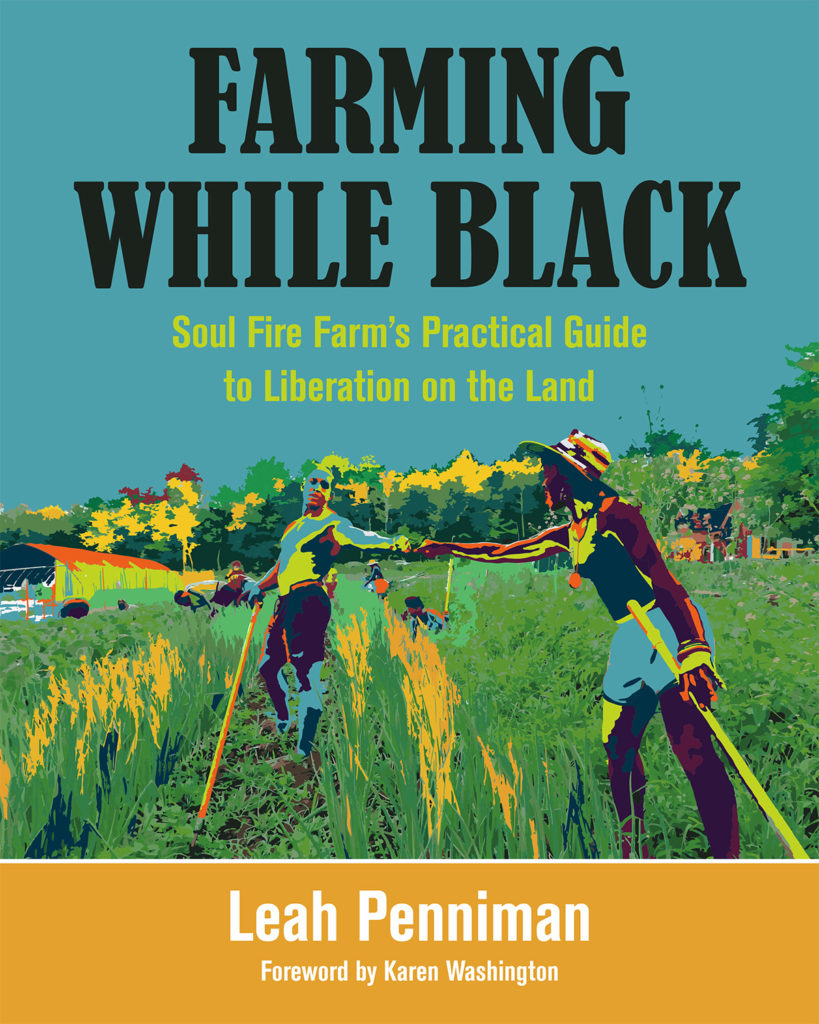
Farming While Black is the first comprehensive “how to” guide for aspiring African-heritage growers to reclaim their dignity as agriculturists and for all farmers to understand the distinct, technical contributions of African-heritage people to sustainable agriculture.
This is a truly epic piece of work which includes some compelling history lessons alongside being a cultural and practical manual for acquiring, working and thriving on the land in America. There is so much to learn here for land workers of colour as well as white people on an anti-racism journey.
We have included some of the things we learned from this book into recent performances of the show.
If you don’t want to dive straight into the book, Leah Penniman’s podcast with Farmerama is a good place to start or one of these blogs:
Memo: Land Access for Beginning and Disadvantaged Farmers
We Need a Green New Deal for Farmland
“In 1910, one in seven farmers were African-American and held titles to approximately 16-19 million acres of farmland. Over the next century, 98% of Black farmers were dispossessed through discriminatory practices at the USDA and various federal farm programs. These farmers were often denied loans and credit, lacked access to legal defense against fraud, and experienced “outright acts of violence and intimidation” resulting in a 90% loss of Black-owned farmland in the US.
Today, 98% of private rural land is owned by white people, while less than 1% is Black-owned. The USDA’s systemic bias against Black and minority farmers “is well documented” and affirmed by the 2010 Pigford vs. Glickman class action lawsuit, which resulted in a $1.25 billion settlement. Black farmers continue to experience discrimination in access to credit, seeds, and other assistance, and face foreclosure at six times the rate of their White counterparts.”
2012 BBC Panorama revealing how millions of pounds of public money are paid out to businessmen and millionaire farmers in an abuse of the farming subsidy system. Investors tell us how they have been paid without having to do any farming at all. And Samantha also sets out to see if she can take advantage of the subsidy system and become rich from the loophole.
The programme also examines the rest of the subsidy system and hears criticism of large payments to wealthy individuals like the Queen and the Duke of Westminster simply on the basis of owning large amounts of land.
Six-figure subsidies meant to help struggling farmers are being paid out to some of Britain’s richest landowners, BBC Panorama has found.
Recipients of the EU subsidy include the Queen and the Duke of Westminster.
The programme requested details of the number of landowners claiming a slice of the £3.5bn subsidy in the UK.
The EU’s Agriculture Commissioner has called for a cap of about £250,000 for each farmer and measures to ensure that they are actively farming their land.
Privacy rules mean that the names of most recipients are not known, but anonymised details were given showing how many landowners across the UK received more than the cap proposed by Agriculture Commissioner Dacian Ciolos.
The data from England, Northern Ireland, Wales and Scotland shows that 889 landowners received more than £250,000. Of those, 133 were given more than £500,000 and 47 of those were given more than £1m in subsidy.
Jack Thurston, who campaigns for reforms to the Common Agriculture Policy’s subsidy, said: “These are very wealthy people and if we’re in the business of handing out public money to farmers because they’re poor, these are not the kind of people that we’d be handing that money to.”
Mr Thurston said the system is flawed because it rewards large landowners based on the number of hectares they own, not on financial need.
Officials in Scotland and Wales said they would consider a cap, while Northern Ireland has endorsed a cap of £100,000. But the Department of Food and Rural Affairs (Defra) for England is against the proposal.
In a statement, Defra said charities that are also large landowners, such as the National Trust, would be harmed if the subsidy requirements were changed.
In a statement, it also said: “Successive UK government have been opposed to capping payments. This is because to avoid losing subsidies, bigger farms would restructure and the only gainers would be lawyers.”
EU Agriculture Commissioner Mr Ciolos said the system needs to change: “I am very frustrated because this means millions of very honest farmers have to suffer because some speculators who use this opportunity with the Common Agricultural Policy became more rich only because they have some hectares.”
The National Farmers Union has also defended the current subsidy system, saying some payouts to wealthy landowners are “unavoidable”.
Peter Kendall, NFU president, said it still remains the best possible system for farmers: “It is one of those side effects of the system we have at present. I want money to go to active farmers who are producing food, and that should matter whether you’re producing on two acres, or two thousand acres.
You must be logged in to post a comment.